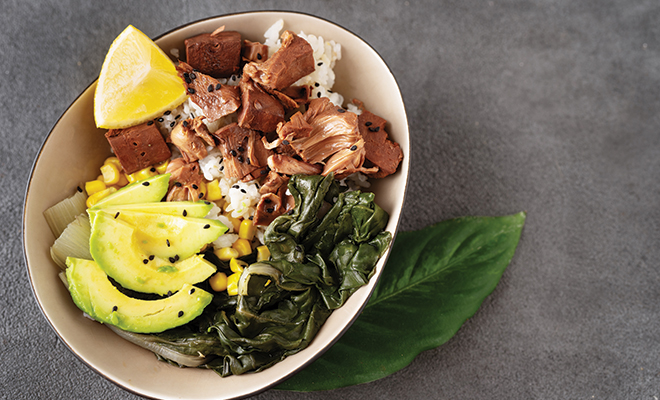
What’s New for Food in the New Age Roaring ‘20s
The new trendy consumer is becoming increasingly health-oriented, polarized, ethnic and an activist. They want that fresh, natural and additive-free food.
They crave bold, authentic and adventurous meals. The consumers demand transparent, local and sustainable practices. This trendy consumer is also seeking convenient yet sophisticated dining experiences.
Plant-Based Menus
The trends toward plant-based diets are already growing rapidly. During 2020, they will be unstoppable! More people are deciding to move away from beef, pork, poultry and dairy on a regular basis and making a conscious decision to eat more plant-based foods. This global trend is not about removing meat or animal products from the plate, but including more plant sources. It encourages the consumption of foods such as fruits and vegetables, whole grains, plant-based oils, nuts and legumes, therefore enhancing the diet.
Already, so much research has taken place in an effort to make meat substitutes flavorful. The success of this research has piqued the interest of fast-food chains and they are now incorporating the trend in their menus. It’s predicted that many restaurants will follow suit and will have more plant-based food items available on their menus. Some of the major fast-food chains that have hopped on the plant-based wagon are Burger King, with their new Impossible Whopper, and White Castle with the Impossible Slider.
With cooking and food inventions, meat and dairy flavors can be created using non-meat and non-dairy products such as soy, peas, cashews and almonds. The plant-based diet has been proven to aid in reducing the risks for many medical conditions, diseases and cancers.
CBD Foods
The CBD food trend has blown up in the past year. Coffee shops, cafés and now even restaurants in many American cities are offering menu items infused with CBD oil. CBD-infused drinks are also gaining momentum in the beverage market, including sparkling waters, coffees, teas, energy drinks, beer, wine and mixed alcoholic beverages. Many establishments are targeting customers interested in trying new eco-friendly, plant-based ingredients. The many common conditions CBD is known to aid in have only helped this trend succeed. Some of the many common conditions that CDB has been used for include Crohn’s disease, diabetes, asthma, epilepsy, anorexia and anxiety.
Healthy Snacks
People will continue to move further away from the staple snacks of chips and cookies and choose healthier snack options with ingredients such as chickpeas, beets, quinoa and kale. Consumers are also choosing snacks of fruits and vegetables alongside a healthy dip such as Greek yogurt and hummus. With the continued frenzy to improve one’s health and longevity, people will be choosing healthier snacks to increase the already growing health-conscious trend, a trend this registered dietitian can get behind!
Jackfruit
Along with the plant-based diet enters the jackfruit’s revolution. Already a popular meat substitute for barbecue pulled pork because of its similar texture, this Southeast Asian fruit is packed with iron, calcium, magnesium and B vitamins and will become a staple in the food industry as the meat alternative demand grows. The fruit has been known to have chemo-protective properties that may reduce the growth of cancer cells; however, more research is needed to confirm those results.
Sustainability
Concerned about climate change, many consumers are demanding more sustainable packaging and ingredients, making sustainability integral to the food and beverage operating model. It will not be only plastic straws that food services operations replace or remove. Whether it’s substituting Styrofoam and plastic with paper or bamboo, or buying ingredients from sustainable sources, it is foreshowed that the entire food industry will be swept up in the sustainability movement.
Restaurants, banquet providers and other food industry facilities will continue to see demands for less waste. Chefs can use leftover ingredients in a variety of recipes, from soups and stews to desserts. With the right planning and inspiration, it’s possible to minimize food waste and use as many parts of an ingredient as possible.
Farm-to-table is no longer just a single trend that focuses on bringing local food to restaurants, school cafeterias and other locations within the same community but is now a movement toward the sustainability trend. You not only get a fresher tastier and more nutritious meal but an environmentally friendly one as well.
Ugly Produce
Surveys show that about 40 percent of all the food produced in the U.S. goes uneaten because it is imperfect. But consumers are now accepting deformed, bruised and just downright ugly foods as totally edible. As a way to battle the food waste epidemic, many start-up food companies are sending boxes of these ugly foods directly to consumers’ homes. This will encourage consumers to buy produce that is nutritious and tastes great but is physically flawed in some way ■
Sources: eatright.org, pcma.org, newyorker.com, climate.emerson.com and nationalpeanutboard.org.







